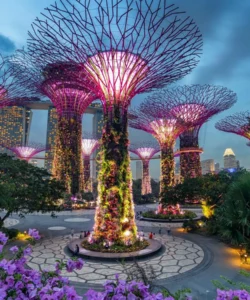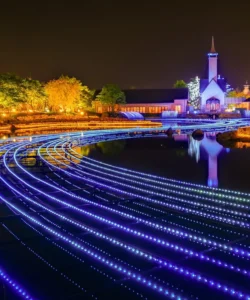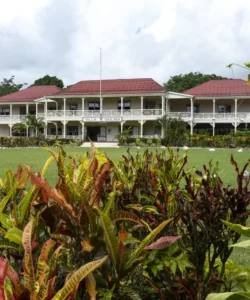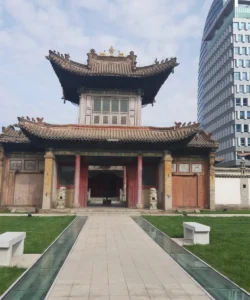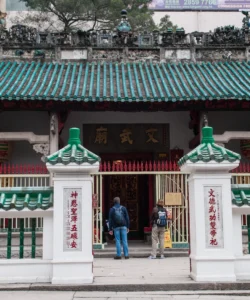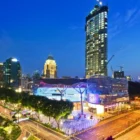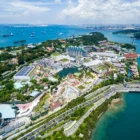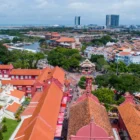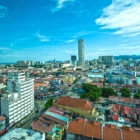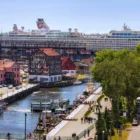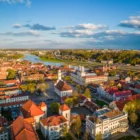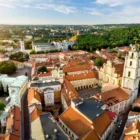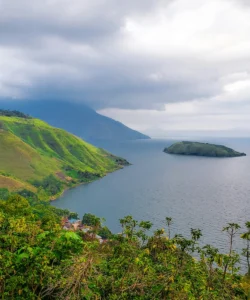The Petronas Twin Towers stand as a dazzling symbol of Kuala Lumpur, Malaysia’s rapid ascent as a global economic and cultural hub. These iconic skyscrapers, with their distinctive Islamic-inspired architecture, were once the tallest buildings in the world and remain the tallest twin towers.
Name: Petronas Twin Towers (also colloquially known as KLCC Twin Towers)
Address: Lower Ground (Concourse) Level, PETRONAS Twin Towers, Kuala Lumpur City Centre (KLCC), 50088 Kuala Lumpur, Malaysia.
They are centrally located in the heart of Kuala Lumpur, adjacent to the lush KLCC Park and the upscale Suria KLCC shopping mall.
How to Get There:
The Petronas Twin Towers are extremely well-connected within Kuala Lumpur’s public transportation network:
- By Train (LRT): This is often the quickest and most convenient way. Take the Kelana Jaya Line (LRT) and alight at the KLCC LRT Station. The station is located directly beneath Avenue K shopping mall, and from there, it’s a short, air-conditioned walk through an underground tunnel or overhead walkway directly into Suria KLCC mall, which is at the base of the towers.
- By Bus: Numerous bus routes serve the KLCC area. The KLCC bus stop is directly in front of the main entrance.
- By Monorail: While not directly connected, you can take the KL Monorail to Raja Chulan Monorail Station or Bukit Nanas Monorail Station, from which it’s about a 15-20 minute walk to the towers.
- By Taxi/Ride-Sharing (Grab): Taxis and ride-sharing services like Grab are readily available throughout Kuala Lumpur and can drop you off directly at the main entrance or the Suria KLCC mall.
- By Car: If driving, follow signs to Kuala Lumpur City Centre (KLCC) via Jalan Ampang or Jalan Sultan Ismail. Ample parking is available in the Suria KLCC basement car park.
Landscape and Architecture:
The Petronas Twin Towers are a striking example of postmodern architecture, blending modern engineering with traditional Islamic motifs.
- Height and Structure: Each tower stands at 451.9 meters (1,483 feet) with 88 stories, making them the tallest twin buildings in the world. They were the tallest buildings globally from 1998 to 2004. The structural system is a “tube in tube” design, largely constructed of super high-strength reinforced concrete, which was a cost-effective choice in Malaysia due to the expense of importing steel.
- Islamic-Inspired Design: The floor plate of each tower is based on the Rub el Hizb (eight-pointed star), a significant symbol in Islamic art representing unity, harmony, stability, and rationality. Architect César Pelli, after consultation with Malaysia’s then-Prime Minister Mahathir Mohamad, incorporated these geometric forms, adding semicircles to the inner angles to increase floor space. The exterior features a stunning combination of stainless steel and glass, designed to resemble multifaceted diamonds sparkling in the sun.
- The Skybridge: A iconic double-decked Skybridge connects the two towers at the 41st and 42nd floors, at a height of 170 meters (558 feet) above ground. This isn’t merely a connecting walkway but also functions as a safety feature, allowing quick evacuation from one tower to the other in an emergency, and is designed to slide in and out as the towers sway during high winds.
- KLCC Park: The towers are fronted by the beautiful KLCC Park, a 50-acre urban park designed by Roberto Burle Marx. The park features walking paths, a children’s playground, wading pools, and the Lake Symphony fountain, which offers mesmerizing light and sound shows daily, providing a perfect foreground for photographs of the towers.
- Suria KLCC: At the base of the towers is Suria KLCC, one of Malaysia’s premier shopping malls, integrating the commercial aspect seamlessly with the architectural landmark. The Dewan Filharmonik Petronas (Malaysian Philharmonic Orchestra concert hall) is also housed within the towers, adding a cultural dimension.
What Makes It Famous:
- Symbol of Malaysia’s Progress: The towers were designed to symbolize Malaysia’s ambition and emergence as a modern, industrialized nation on the global stage. They are a powerful representation of the country’s vision and confidence.
- World’s Tallest Twin Towers: While no longer the tallest buildings overall, they hold the prestigious title of the tallest twin skyscrapers in the world, a feat of architectural and engineering prowess.
- Iconic Landmark: The Petronas Twin Towers are Kuala Lumpur’s most recognizable landmark and a must-visit attraction for tourists, offering stunning views from the Skybridge and Observation Deck on Level 86.
- Architectural Significance: Their unique blend of postmodern design with deep Islamic cultural symbolism makes them a significant architectural achievement.
- Urban Hub: Beyond being a visual spectacle, the towers house the headquarters of Petronas (Malaysia’s national petroleum company), numerous other offices, the Suria KLCC mall, Petrosains (a science discovery center), and the Malaysian Philharmonic Orchestra, making them a vibrant commercial, cultural, and recreational hub.
- Nighttime Spectacle: The towers are particularly famous for their dazzling appearance at night when illuminated, offering spectacular photographic opportunities from KLCC Park.
Differences from Some Other Wonders:
- Twin Tower Configuration: While many cities have single supertall skyscrapers (e.g., Burj Khalifa, Shanghai Tower), the Petronas Towers are famous specifically as a pair of identically designed, interlinked towers. This dual structure with the Skybridge is a defining characteristic.
- Islamic Architectural Influence: Unlike many contemporary skyscrapers that prioritize sleek, Western-influenced modernism, the Petronas Twin Towers explicitly and proudly incorporate strong Islamic geometric patterns and motifs into their fundamental design, reflecting Malaysia’s cultural heritage.
- “Top-Down” Public Access: Unlike some observation decks that are on the very highest floors (e.g., Burj Khalifa’s At The Top), the public viewing experience at Petronas Towers includes access to both the Skybridge (Level 41/42) and the Observation Deck (Level 86), allowing for different perspectives and experiences of the height.
- Integrated Urban Complex: The towers are part of a meticulously planned integrated urban development (KLCC) that includes a large park, a major shopping mall, and cultural venues, making them a central part of the city’s daily life and leisure, not just a standalone attraction.
- Concrete Construction: While many supertall skyscrapers utilize steel extensively, the Petronas Towers’ primary construction material is high-strength reinforced concrete due to local economic factors, making them significantly heavier but demonstrating a different engineering approach to achieving immense height.

































